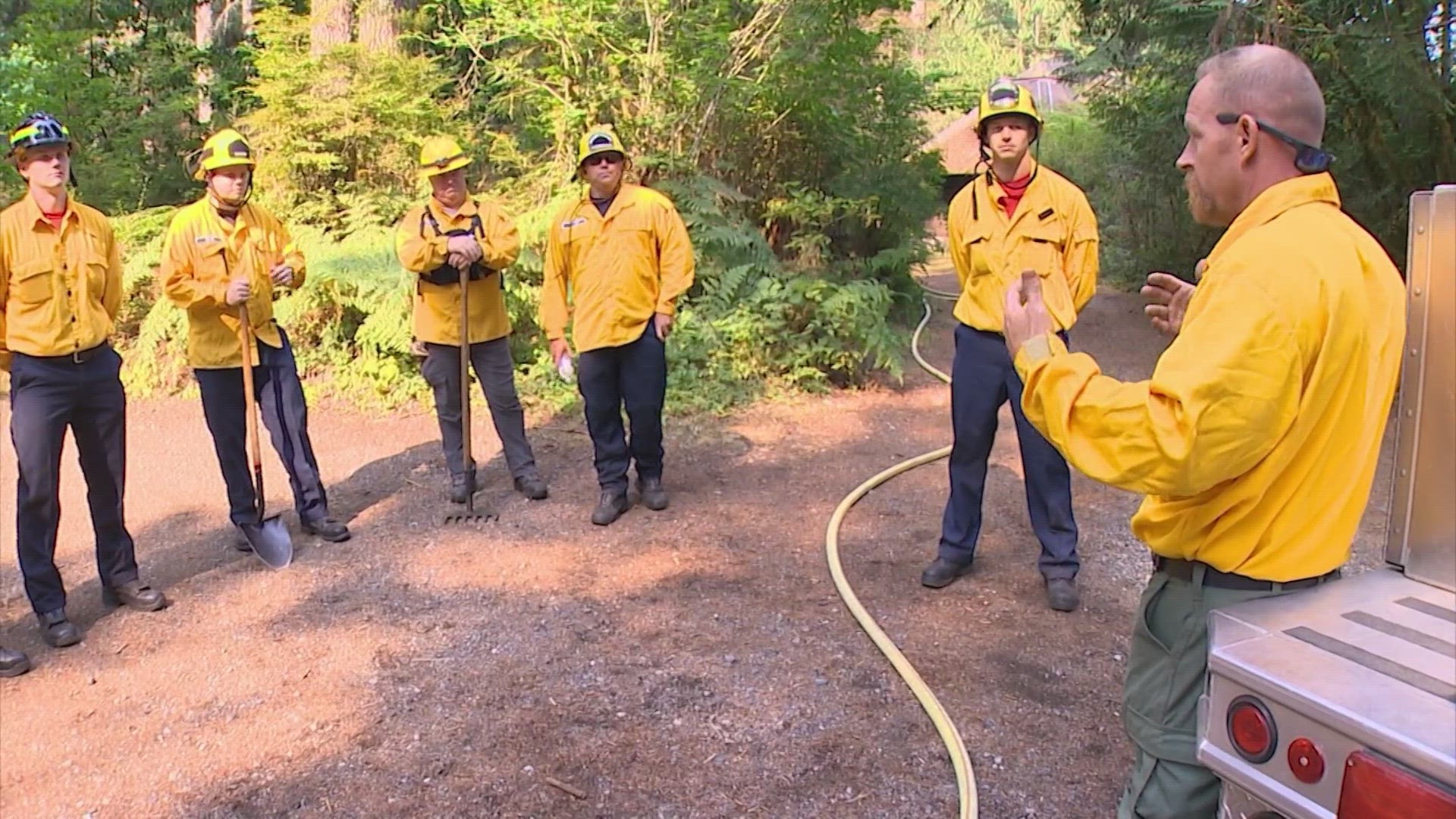SNOHOMISH COUNTY, Wash. — Western Washington has largely been spared of wildfires this season, but officials remind people that they are far from being out of the danger zone.
New wildland firefighter recruits are currently training to go to the front lines when duty calls, and with fires in the west side of the state growing more frequent, they are needed more than ever.
New recruits with Snohomish Regional Fire and Rescue (SRFR) dig a fire line around a house. They're learning how to save property and people.
Among them is Mitch Wurm.
At 32 years old and a father of two kids under the age of 3, preparing to walk into a wildfire might not sound like the safest career path, but Wurm sees it differently.
"I mean someone's gotta do it, right? I know I'm physically fit. I'm strong. That's just how I can help the people around me and help the community," he said.
The three biggest fires in Washington state history have all happened over the past nine years, burning nearly a million acres.
Increasingly, the fires are moving into western Washington, including the Sumner Grade Fire that destroyed four homes in Sumner three years ago.
Seeing that sort of destructions in a local suburb makes the training hit home.
"Everything we're doing is very strict, very detail oriented because those details are going to matter when someone's life is on the line," said Wurm.
While the end of summer is near in what has been a relatively calm fire season, firefighters say this is not the time to become complacent.
"The end of August and into September is the heat of fire season for us," said SRFR Lt. Brian Kees.
With that in mind, emergency managers in Snohomish, King, Pierce and Thurston counties are changing how they issue evacuation warnings. The goal is to make them more clear. Instead of levels 1, 2, and 3, they're now labeled as "Ready," "Set" and "Go."
"Ready" means a threat may be headed your way and you should start planning to leave.
"Set" means to prepare to evacuate — assemble an emergency kit and pack important papers and medicines. Older people and people with disabilities should leave at this point.
"Go" indicates an immediate danger and you need to leave at once.
And right now, weather conditions are perfect for those warnings to be put in place.
"These fuels are as dry as they're gonna be," said Kees. "This is our time. A little spark will start something large."
With many uncertain weeks, and years, ahead, Wurm and the rest of the new recruits know that no one is safe from wildfires.
That is why they feel called to protect fellow residents.
"Maybe it's my family that's in that house," said Wurm. "I know lot of us feel that way. That's why we're out here fighting for each other and for the community."

